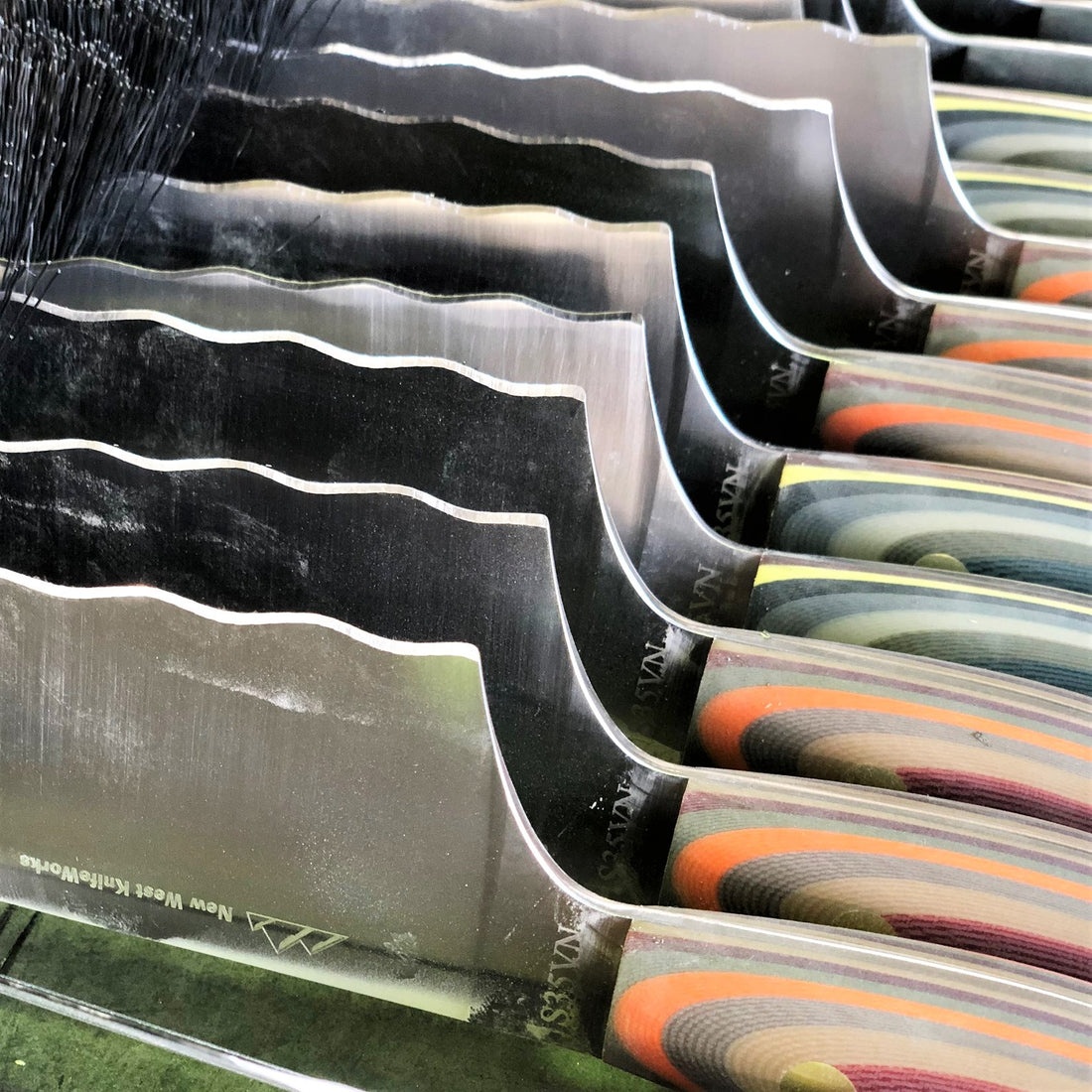Knife making is a practical art form that has shaped human history, yet its application is as simple as the serrated steak knife you use everyday. That steak knife has more in common with Japanese samurai swords and 18th century German farmhouse blades than you might think: but how, exactly, is a high performance knife made with modern technology? In this series we will delve into the process behind the most revolutionary American made knives on the market.

Tapping an open-hearth furnace at Crucible Industries, 1967
Photo Source: Wikipedia
Step one is all about the initial, crucial building block of an excellent knife: the raw steel that eventually forms its blade. You might assume that steel isn’t manufactured in the United States anymore, and although steel manufacturing stateside has certainly declined, this isn’t completely true. The most innovative high performance steel is made right here at home at Crucible Industries in New York. This over 100-year-old company began in England in the late 1800’s and moved to New York in 1900, originally manufacturing steel primarily for automobiles. These days, the company specializes in high-end steel with technical applications in aerospace, medical, military and high-tech manufacturing.
New West Knifeworks knives became a cult classic among culinary professionals due to their ability to seamlessly do it all: the knives combine razor sharp edges, ease of sharpening, and hardiness. The secret of that perfect symmetry lies in a very particular high grade specialized steel, Crucible’s CPM “powder metal” S35VN.
The term “powder metal” refers to the steel’s innovative process: first, molten steel is poured through a small nozzle where high pressure gas bursts the liquid stream into a spray of tiny spherical droplets, creating powder particles. The uniform powder is then poured into steel cylinders and heated again, consolidating the powder into a uniform, fine grained material, eliminating the incongruity that is present in traditional steel. The powder metal process achieves what has been the Holy Grail of steel performance for centuries: extreme hardness and extreme toughness at the same time. This translates into a long lasting, wicked sharp edge that will not chip or break, yet is also easy to sharpen and maintain.
This graphic shows the difference in particles within each steel: the CPM steel used in New West knives is congruous and mostly free of imperfections, making it stronger and tougher.
It comes as no surprise, then, that this same steel is used in military grade knives that need to work reliably and often in extreme situations. Chris Reeves, a knife maker from Idaho who is famous for making the best pocket and tactical knives in the world, helped Crucible Industries develop the S35VN metal specifically for knife making. He uses it in his Harsey knife, a fixed blade that is awarded to Green Berets when they graduate from training.
New West KnifeWorks is actually the 2nd or 3rd largest user of S35VN steel in the world, owing in part to the fact that most buyers use the steel in pocket knives with tiny blades, and New West uses it in chef’s knives with much larger blades. Unless you are also a Green Beret, chances are you use a pocket or tactical knife once in a while, but your kitchen knives need to stand up to daily use over a lifetime. New West is one of the only companies in the world applying tactical knife making technology to the knives we use and love the most.
The best knives are a sum of their parts, and they are only as good as their very first step: the procurement of the highest quality, world class and American made raw materials. Next month, find out more about different knife making traditions and how modern knives are combining the best techniques from the old world with American materials, innovation, and workforce.

Unfinished New West Superbread knives with S35VN Lasered onto the choil to highlight their quality ingredients

